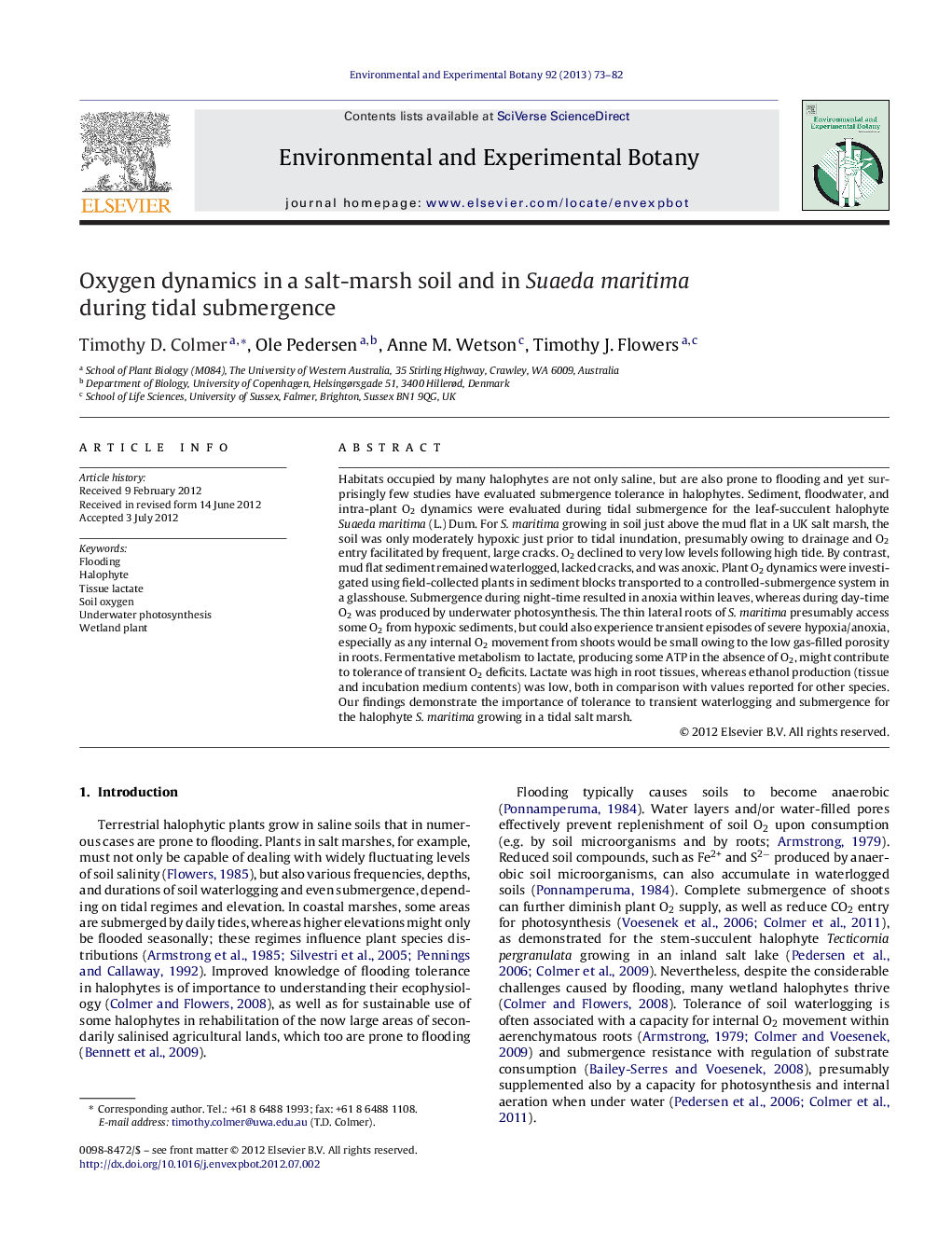| Article ID | Journal | Published Year | Pages | File Type |
|---|---|---|---|---|
| 4554508 | Environmental and Experimental Botany | 2013 | 10 Pages |
Habitats occupied by many halophytes are not only saline, but are also prone to flooding and yet surprisingly few studies have evaluated submergence tolerance in halophytes. Sediment, floodwater, and intra-plant O2 dynamics were evaluated during tidal submergence for the leaf-succulent halophyte Suaeda maritima (L.) Dum. For S. maritima growing in soil just above the mud flat in a UK salt marsh, the soil was only moderately hypoxic just prior to tidal inundation, presumably owing to drainage and O2 entry facilitated by frequent, large cracks. O2 declined to very low levels following high tide. By contrast, mud flat sediment remained waterlogged, lacked cracks, and was anoxic. Plant O2 dynamics were investigated using field-collected plants in sediment blocks transported to a controlled-submergence system in a glasshouse. Submergence during night-time resulted in anoxia within leaves, whereas during day-time O2 was produced by underwater photosynthesis. The thin lateral roots of S. maritima presumably access some O2 from hypoxic sediments, but could also experience transient episodes of severe hypoxia/anoxia, especially as any internal O2 movement from shoots would be small owing to the low gas-filled porosity in roots. Fermentative metabolism to lactate, producing some ATP in the absence of O2, might contribute to tolerance of transient O2 deficits. Lactate was high in root tissues, whereas ethanol production (tissue and incubation medium contents) was low, both in comparison with values reported for other species. Our findings demonstrate the importance of tolerance to transient waterlogging and submergence for the halophyte S. maritima growing in a tidal salt marsh.
► Sediment, floodwater, and plant O2 dynamics were evaluated during tidal submergence. ► O2 was produced by underwater photosynthesis during day-time submergence. ► Submergence during night-time resulted in plant tissue anoxia. ► Lactate was high, whereas ethanol production was low, in roots of Suaeda maritima. ► Sediment O2 status and flooding tolerance influence halophytes in tidal marshes.
